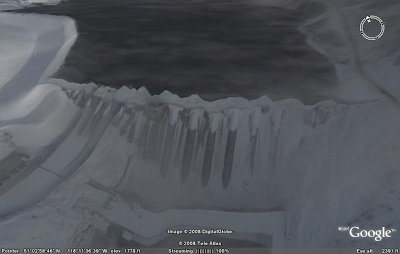The
GeoPDF format seems to be gaining traction these days. I have to admit, when I first heard of this technology I had the
same reaction as James Fee - "What's it good for"? But I'm coming round... A live map with rich information content and a true geospatial coordinate system - what's not to like?
My excuse for such scepticism is my finely-honed technical bullsh*t reflex, which uses the logic of "If this is such a good, obvious, simple idea then why hasn't it been implemented ages ago?".
To be fair, there have been lots of SVG mapping demos, which fill the same use case and provide equivalent functionality. Sadly that concept hasn't really caught fire, though (perhaps due to the ongoing SVG "always a bridesmaid, never a bride" conundrum).
Of course, an idea this good is really too important to be bottled up in the murky world of proprietary technology. It seems like this area is ripe for an open standard. SVG is the obvious candidate for the spatial content (sorry, GeoJSON). What it needs is some standards around modelling geospatial coordinate systems and encoding layers of features. It seems like this should be quite doable. The goal would be to standardize the document format so that viewers could easily be developed (either stand-alone, as modules of existing viewers, or as browser-hosted apps). Also, the feature data should be easy to extract from the data file, for use in other applications.
Perhaps there's already an initiative like this out there - if so, I'd love to hear about it.







